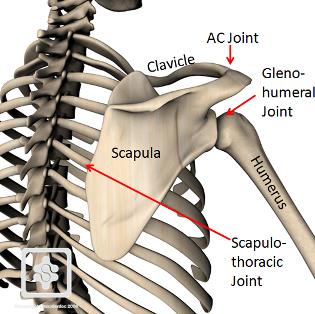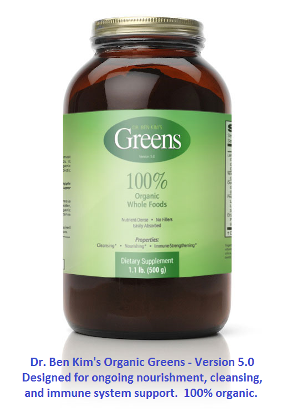You are here
Exercises to Keep Your Shoulders and Shoulder Blades Healthy - Part Two
 Below the layers of skin, fascia, and muscle that surround your shoulders are a series of ligaments that meld together to form a capsule, one per shoulder; it's job is to prevent your shoulder from dislocating, while still providing enough give to allow a wide range of motion.
Below the layers of skin, fascia, and muscle that surround your shoulders are a series of ligaments that meld together to form a capsule, one per shoulder; it's job is to prevent your shoulder from dislocating, while still providing enough give to allow a wide range of motion.
Over time, overt or repeat micro injuries to your shoulder capsules can lead to diminished range of motion, inflammation, and pain.
A highly effective way to keep your shoulder capsules healthy is to do forward and backward shoulder circles.
Begin standing with your feet about shoulder width apart, and raise your arms to your sides until they are about parallel with the floor.
Point your thumbs forward, then slowly turn your arms in small circles going forward. Do five to ten of these circles, then turn your thumbs to point behind you, and do another five to ten shoulder circles going backward.
Here's a short video clip that shows how this is done:
If you can't do shoulder circles while keeping your arms parallel with the floor, feel free to try them with your arms at a lower angle, one that doesn't create any discomfort. This exercise shouldn't cause pain, so be sure to find an angle that feels manageable.
As you get used to doing shoulder circles, feel free to increase repetitions and even do a few sets each way. Putting your shoulders through these circles for a minute or two daily can go a long way towards keeping your shoulder capsules well perfused with blood.
 Another way to keep your shoulder capsules healthy is to ensure fluid movement of your shoulder blades against your ribcage. Your shoulder blades (scapulae) lie against the back of your ribcage, creating a "pseudo joint," sometimes called the scapulothoracic joint. For every two degrees of elevation that your shoulders (glenohumeral joints) experience, in order for all surrounding tissues to avoid unnecessary stress like impingement, your scapulothoracic joints need to rotate about one degree.
Another way to keep your shoulder capsules healthy is to ensure fluid movement of your shoulder blades against your ribcage. Your shoulder blades (scapulae) lie against the back of your ribcage, creating a "pseudo joint," sometimes called the scapulothoracic joint. For every two degrees of elevation that your shoulders (glenohumeral joints) experience, in order for all surrounding tissues to avoid unnecessary stress like impingement, your scapulothoracic joints need to rotate about one degree.
For many people who "turtle," or slouch forward with their shoulders and chest, scapulothoracic action is dysfunctional, which inevitably leads to a decrease in space in the front shoulder region (sub-acromial space), which sets the stage for chronic shoulder pain and stiffness.
The best way to maintain healthy movement between your shoulder blades and rib cage is to do an exercise that I learned long ago from physiotherapist, Pete Egoscue, one that I call the shoulder hinge exercise.
Begin standing against a wall with your feet about shoulder width apart.
Cup your ears with your hands or fingers, and begin with the backs of your elbows touching the wall.
Keep your back against the wall and your fingers on your ears, and slowly bring your elbows out in front of you until they meet.
If you can't bring your elbows to touch one another, just go as far as you can without causing discomfort, and be sure to keep your fingers cupping your ears and your back against the wall.
Now bring your elbows back against the wall, and repeat this "hinge" action several times.
Here's a brief video clip that illustrates this shoulder hinge exercise:
And there you have it - two simple exercises that are powerfully effective in preventing and even treating chronic shoulder problems like tendonitis, bursitis, and adhesive capsulitis (frozen shoulder).
Please consider sharing these exercises with family members and friends who are interested in self health care.
For more exercises to keep your shoulders healthy, please feel free to view:
Simple Exercises to Keep Your Shoulders Healthy
If you don't have a foam roller and are looking to invest in one that offers a blend of comfort, durability, and ideal density to provide therapeutic rolling of your muscles and ligaments, please feel free to have a look at the one that I had custom made for our clients here:
For a DVD that presents still photos and video clips that illustrate how to take your body through all of the major stretches and foam rolling exercises you can do to keep your body as healthy as your genetics will allow, have a look here:
Stretching and Foam Rolling DVD, by Sharon Lee and Dr. Ben Kim
Join more than 80,000 readers worldwide who receive Dr. Ben Kim's free newsletter
Receive simple suggestions to measurably improve your health and mobility, plus alerts on specials and giveaways at our catalogue
Please Rate This
Highest Rated | Related Posts | ||
















Comments
Shoulder Exercises
Thank you! Thank you! Thank you! Just when I needed them, you had these exercises ready for me to use. Clear and easy to replicate, I will be paying some positive attention to my poor shoulders.
Again, thank you very much.
Shoulder Exercises
These are great! One other thing people can try if they have back pain is to stand with the arms hanging down at the side of the body. If the back of the hands are turned so that they face away from the body the person will almost always suffer back pain. By turning the backs of the hands so that they face forward while hanging down, the shoulder will go down where they belong and the ribs will roll up where they belong, and all the tension will leave the back.